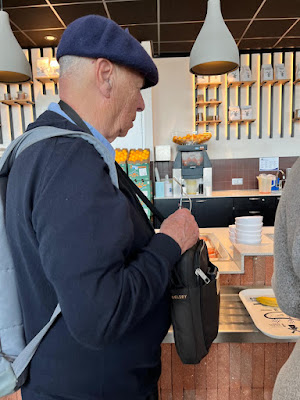Jerzy Ficowski (1924 - 2006) was a Polish poet, writer and translator (from Yiddish, Russian, Romani and Hungarian).
During the German occupation of Poland in World War II, Ficowski who lived in Włochy near Warsaw was a member of the Polish resistance. He was a member of the Home Army (Armia Krajowa, AK), was imprisoned in the infamous Pawiak and took part in the Warsaw Uprising of 1944. His codename was Wrak and he fought in Mokotów region.
After the war, Ficowski studied philosophy and sociology at Warsaw University. There he published his first volume of poetry, Ołowiani żołnierze (The Tin Soldiers, 1948). This volume reflected the Stalinist atmosphere of the early postwar Poland, in which heroes of the Armia Krajowa Warsaw Uprising were treated with suspicion at best, arrested and executed at worst, together with the sense of a new city arising on the ashes of the old.
From 1948 to 1950 Ficowski travelled with Polish Gypsies and came to write several volumes on or inspired by the Roma way of life, including Amulety i defilacje (Amulets and Definitions, 1960) and Cyganie na polskich drogach (Gypsies on the Polish Roads, 1965). He was the member of the Gypsy Lore Society and translated the poems of Bronisława Wajs (Papusza). Roma prisoners sitting in an open space in the Bełżec camp, July 1940. Photo Jerzy Ficowski
Ficowski translated the poems of Federico García Lorca, and he was also a known specialist of Jewish folklore and Jewish poetry, becoming an editor of the Jewish poem anthology Rodzynki z migdałami (Raisins with Almonds, 1964).
After he signed the letter of 59 in 1975, all of Ficowski's works had been banned in Poland. However, his prose and poems were translated widely in the West and the emergence of Solidarity in the 1980s brought his works back to Poland's bookshelves. He was active in the opposition movement, and was a member of the Workers' Defence Committee (Komitet Obrony Robotników, KOR) and later the Committee for Social Self-defence KOR.



















































